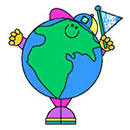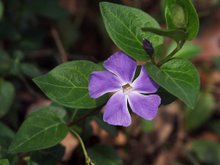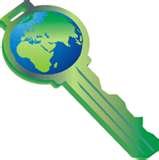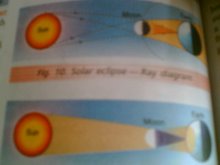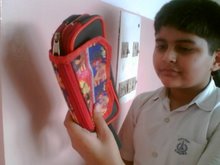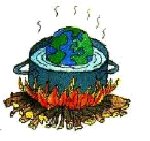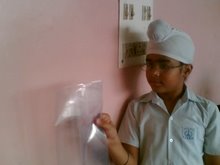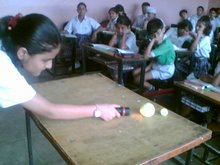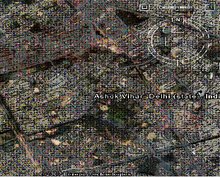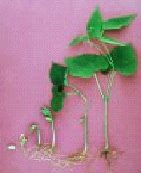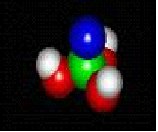The Food Chain:
An ecosystem is a living community which depends on each member and its surrounding environment. The living part of an ecosystem is sometimes called a food chain.
Every participant in an ecosystem has an important part to play and if one becomes more dominant than the others, the ecosystem can develop problems.
We'll start with the producers. These are living things which take the non living matter from the environment, such as minerals and gases and uses them to support life. Green plants are considered producers and the are at the beginning of the food chain.
Next are the consumers. These living things need the producers to be their food.
Animals who eat plants are called herbivores. They are considered consumers and are next in the food chain.
Animals who eat other animals are called carnivores. They also considered consumers and are a link farther along on the food chain since they need the herbivores for their food.
Animals and people who eat both animals and plants are called omnivores, and they are also part of the consumer piece of the ecosystem.
Finally, the last part of the ecosystem is the decomposers.
These are the living things which feed off dead plants and
animals and reduce their remains to minerals and gases
again. Examples are fungi, like mushrooms, and bacteria.
Monday, 10 December 2007
FAST FACTS about EARTH:
circumferance: 24,901.5 miles
diameter: Nearly 8,000 miles
surface area: 196,935,000 sq miles
percent of earth's ocean approximatly 70% *
percent of earth's land: approximatly 30%
highest point:Mt Everest 29, 028 above sea level
lowest point: Dead Sea 1,302 below sea level
* of the 70 percent of water; 97 percent is salt water, 3 percent is fresh water
The EARTH is made of the following CHEMICAL ELEMENTS:
oxygen 46.6 %
aluminum 8.1
iron 5
sodium 2.8
magnesium 2.1
calcium 3.6
potassium 2.6
silicon 27.7
other 1.5
Here is an example of how long it takes garbage to break down:
plastics take 500 years
aluminum cans take 500 years
organic materials take 6 months
cotton, rags, and paper take 6 months.
Other Interesting FACTS:
Earth is referred to as the BLUE PLANET. WHY? Because from space,
the oceans combined with our atmosphere make our planet look blue.
Earth is estimated to be 3-5 Billion Years old.
Earth is estimated to weigh 6,585,600,000,000,000,000,000 tons.
The area of the earth is almost 200 million square miles.
Earth travels through space at 66,700 miles per hour.
Earth's oceans are an average of 2 Miles deep.
Earth's rotation on its axis makes a day at 24 hours...
Earth's orbit around the sun makes a year at nearly 365 and 1/2 days
Earth is tipped at 23 and 1/2 degrees in orbit. That axis is what causes our seasons.
Antarctica is the coldest place on earth. The continent is almost entirely covered in ICE !
Only 11 percent of the earth's surface is used to grow food.
Breeze carries about 100 Million tons of sand particles around the earth yearly.
That means if you live in America-you could have Sand that came from the Gobi desert in China.
diameter: Nearly 8,000 miles
surface area: 196,935,000 sq miles
percent of earth's ocean approximatly 70% *
percent of earth's land: approximatly 30%
highest point:Mt Everest 29, 028 above sea level
lowest point: Dead Sea 1,302 below sea level
* of the 70 percent of water; 97 percent is salt water, 3 percent is fresh water
The EARTH is made of the following CHEMICAL ELEMENTS:
oxygen 46.6 %
aluminum 8.1
iron 5
sodium 2.8
magnesium 2.1
calcium 3.6
potassium 2.6
silicon 27.7
other 1.5
Here is an example of how long it takes garbage to break down:
plastics take 500 years
aluminum cans take 500 years
organic materials take 6 months
cotton, rags, and paper take 6 months.
Other Interesting FACTS:
Earth is referred to as the BLUE PLANET. WHY? Because from space,
the oceans combined with our atmosphere make our planet look blue.
Earth is estimated to be 3-5 Billion Years old.
Earth is estimated to weigh 6,585,600,000,000,000,000,000 tons.
The area of the earth is almost 200 million square miles.
Earth travels through space at 66,700 miles per hour.
Earth's oceans are an average of 2 Miles deep.
Earth's rotation on its axis makes a day at 24 hours...
Earth's orbit around the sun makes a year at nearly 365 and 1/2 days
Earth is tipped at 23 and 1/2 degrees in orbit. That axis is what causes our seasons.
Antarctica is the coldest place on earth. The continent is almost entirely covered in ICE !
Only 11 percent of the earth's surface is used to grow food.
Breeze carries about 100 Million tons of sand particles around the earth yearly.
That means if you live in America-you could have Sand that came from the Gobi desert in China.
Science Education Myths
The Top Ten Myths of Science Education
MYTH #1: Kids hate taking science in school these days.
REALITY: Not! Half--50 percent--of 10-17 year olds put science... at the top or near the top of their list...of favorite subjects.
MYTH #2: Kids think that science is dull and boring.
REALITY: Not! 42 percent of 10-17 year olds say science is the subject (they) are most curious about. Science was ranked as boring by only 14 percent of the students.
MYTH #3: Kids think science class doesn't relate to the real world.
REALITY: Not! 94 percent of 10-17 year olds say that science isn't just in the classroom; it's part of everyday life in the world around you.
MYTH #4: Kids think learning science is mostly about memorizing facts.
REALITY: Not! 89 percent of 10-17 year olds say science lets (them) be very creative. And 89 percent also say the best way they can learn science is to observe things and do experiments (themselves).
MYTH #5: Kids grow up believing that science is more for boys and not for girls.
REALITY: Not! 89 percent of all 10-17 year olds say no to Science is more for boys than girls.
MYTH #6: Kids think science is for nerds.
REALITY: Not! 93 percent of all 10-17 year olds say no to Science is for nerds. And, of all subjects, science ranked the coolest.
MYTH #7: Most kids are turned off to science in school.
REALITY: Not! When 10-17 year olds were asked for positive and negative things about science, things they like best about science won hands down (91 percent) over things they don't like about science (32 percent).
MYTH #8: Most kids don't have access to computers at home.
REALITY: Not! 68 percent of 10-17 year olds say they have a computer in (their) home.
MYTH #9: All kids do with computers is play games.
REALITY: Not! Of those 10-17 year olds who have and use computers, 75 percent do school work, 64 percent learn things on their own, and 41 percent get information on science topics on their computers.
MYTH #10: Minority kids don't have access to computers at home
REALITY: Partly not! While slightly more than half of African American and Hispanic 10-17 year olds don't, 46 percent of African Americans and Hispanic kids say they have a computer in (their) home.
MYTH #1: Kids hate taking science in school these days.
REALITY: Not! Half--50 percent--of 10-17 year olds put science... at the top or near the top of their list...of favorite subjects.
MYTH #2: Kids think that science is dull and boring.
REALITY: Not! 42 percent of 10-17 year olds say science is the subject (they) are most curious about. Science was ranked as boring by only 14 percent of the students.
MYTH #3: Kids think science class doesn't relate to the real world.
REALITY: Not! 94 percent of 10-17 year olds say that science isn't just in the classroom; it's part of everyday life in the world around you.
MYTH #4: Kids think learning science is mostly about memorizing facts.
REALITY: Not! 89 percent of 10-17 year olds say science lets (them) be very creative. And 89 percent also say the best way they can learn science is to observe things and do experiments (themselves).
MYTH #5: Kids grow up believing that science is more for boys and not for girls.
REALITY: Not! 89 percent of all 10-17 year olds say no to Science is more for boys than girls.
MYTH #6: Kids think science is for nerds.
REALITY: Not! 93 percent of all 10-17 year olds say no to Science is for nerds. And, of all subjects, science ranked the coolest.
MYTH #7: Most kids are turned off to science in school.
REALITY: Not! When 10-17 year olds were asked for positive and negative things about science, things they like best about science won hands down (91 percent) over things they don't like about science (32 percent).
MYTH #8: Most kids don't have access to computers at home.
REALITY: Not! 68 percent of 10-17 year olds say they have a computer in (their) home.
MYTH #9: All kids do with computers is play games.
REALITY: Not! Of those 10-17 year olds who have and use computers, 75 percent do school work, 64 percent learn things on their own, and 41 percent get information on science topics on their computers.
MYTH #10: Minority kids don't have access to computers at home
REALITY: Partly not! While slightly more than half of African American and Hispanic 10-17 year olds don't, 46 percent of African Americans and Hispanic kids say they have a computer in (their) home.
Subscribe to:
Comments (Atom)

